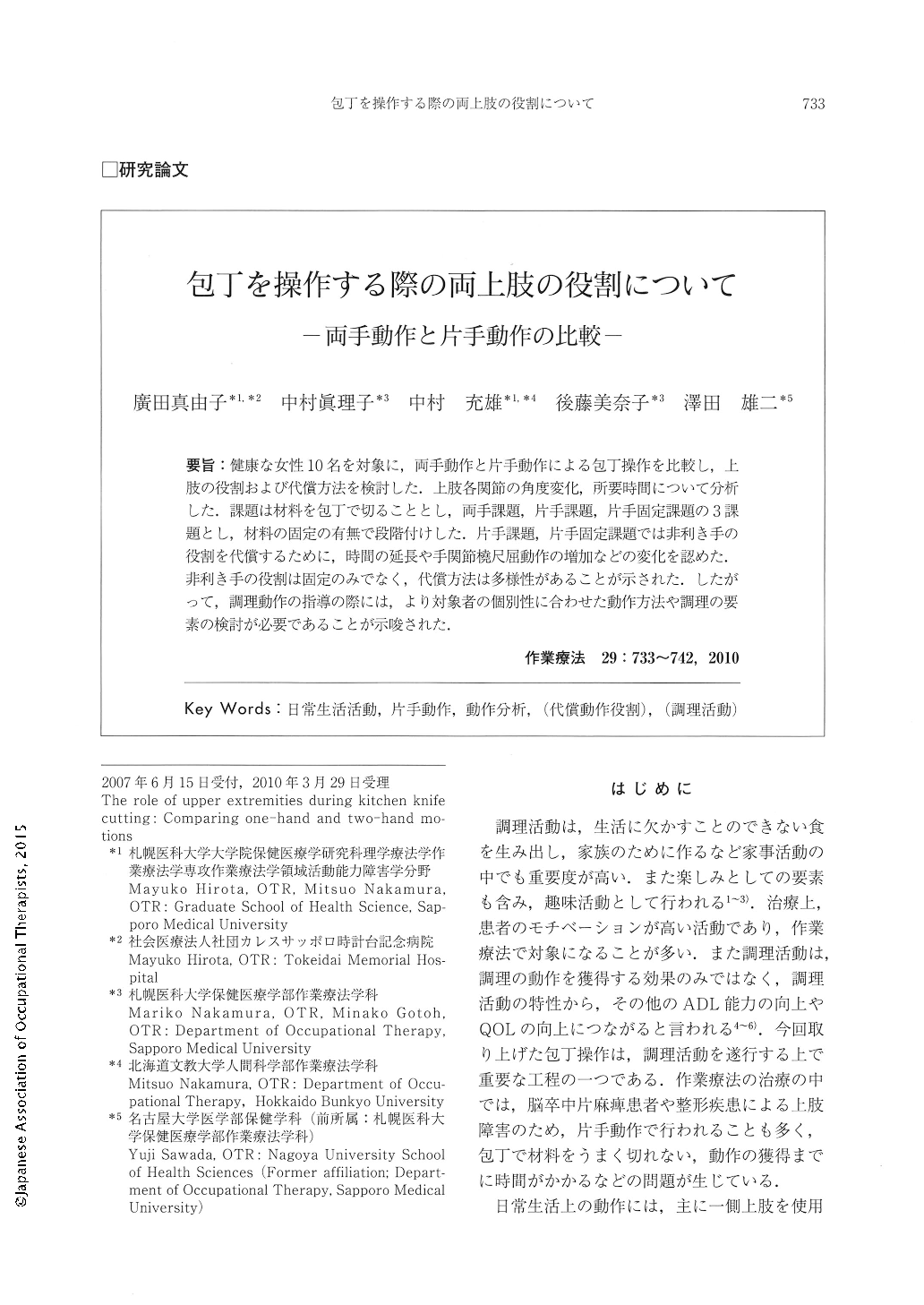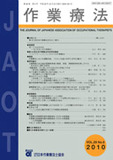Japanese
English
- 販売していません
- Abstract 文献概要
- 1ページ目 Look Inside
- 参考文献 Reference
要旨:健康な女性10名を対象に,両手動作と片手動作による包丁操作を比較し,上肢の役割および代償方法を検討した,上肢各関節の角度変化,所要時間について分析した.課題は材料を包丁で切ることとし,両手課題,片手課題,片手固定課題の3課題とし,材料の固定の有無で段階付けした.片手課題,片手固定課題では非利き手の役割を代償するために,時間の延長や手関節橈尺屈動作の増加などの変化を認めた.非利き手の役割は固定のみでなく,代償方法は多様性があることが示された.したがって,調理動作の指導の際には,より対象者の個別性に合わせた動作方法や調理の要素の検討が必要であることが示唆された.
The cutting motion of a kitchen knife with dominant and non-dominant hands in healthy subjects was analyzed in order to clarify how to compensate for injury or disease-related dysfunctions.
Ten healthy subjects were given a task which consisted of cutting a cucumber with a kitchen knife under three different conditions. Condition 1 was cutting using their dominant hand to hold the knife and their non-dominant hand to hold the cucumber. Condition 2 was cutting using only their dominant hand to hold the knife, with the cucumber fixed in place with a self-help device. Condition 3 was cutting using only their dominant hand to hold the knife, with the cucumber not being held in place in any way. A three-dimensional operation analysis device was used to analyze the cutting motion of the kitchen knife.
Based on the motions of the three conditions, three movement techniques were used to cut the cucumber. The most characteristic motions were that in condition 2 and condition 3 the subjects took a long time to perform the task and increased the joint motions of radial deviation and ulnar deviation of the wrist.
These results suggest that various compensation strategies were utilized when selecting the cutting strategy with the non-dominant hand. The factors needed for selecting the cutting strategy are still unknown.

Copyright © 2010, Japanese Association of Occupational Therapists. All rights reserved.


